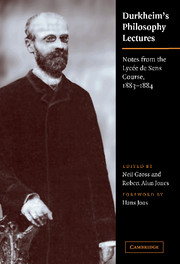Book contents
- Frontmatter
- Contents
- Foreword
- Translators' Note
- Acknowledgments
- Introduction
- Part I Preliminary Matters
- Part II Psychology
- 5 The Object and Method of Psychology
- 6 Faculties of the Soul
- 7 On Pleasure and Pain
- 8 The Inclinations
- 9 The Emotions and Passions
- 10 Theory of Knowledge
- 11 External Perception and Its Conditions. The Senses
- 12 External Perception. The Origin of the Idea of Externality
- 13 External Perception. On the Objectivity of the Idea of Externality. (1) Does the External World Exist?
- 14 External Perception. On the Objectivity of the Idea of Externality. (2) On the Nature of the External World
- 15 Consciousness. On the Conditions of Consciousness
- 16 Consciousness. On the Origin of the Idea of the Self
- 17 Consciousness. On the Nature of the Self
- 18 Reason. The Definition of Reason
- 19 Reason. The Material of Reason. (1) Principles of Reason
- 20 Reason. The Material of Reason (2) Rational or First Ideas
- 21 Reason. Empiricism
- 22 Reason. Evolutionism. The Theory of Heredity
- 23 Reason. On the Objectivity of Rational Principles
- 24 Faculties of Conception. On the Association of Ideas
- 25 Faculties of Conception. Memory
- 26 Faculties of Conception. Imagination
- 27 Faculties of Conception. Sleep. Dreams. Madness
- 28 Complex Operations of the Mind. Attention. Comparison. Abstraction
- 29 Complex Operations of the Mind. Generalization. Judgment. Reasoning
- 30 The Object and Method of Aesthetics
- 31 What Is Beauty?
- 32 Prettiness and the Sublime. Art
- 33 On Activity in General. Instinct
- 34 Habit
- 35 On the Will and on Freedom
- 36 On Freedom (Continued). Psychological Determinism
- 37 On Freedom (Conclusion). Scientific Determinism. Theological Fatalism
- Part III Logic
- Part IV Ethics
- Part V Metaphysics
- Appendix: Biographical Glossary
- Index
12 - External Perception. The Origin of the Idea of Externality
Published online by Cambridge University Press: 21 October 2009
- Frontmatter
- Contents
- Foreword
- Translators' Note
- Acknowledgments
- Introduction
- Part I Preliminary Matters
- Part II Psychology
- 5 The Object and Method of Psychology
- 6 Faculties of the Soul
- 7 On Pleasure and Pain
- 8 The Inclinations
- 9 The Emotions and Passions
- 10 Theory of Knowledge
- 11 External Perception and Its Conditions. The Senses
- 12 External Perception. The Origin of the Idea of Externality
- 13 External Perception. On the Objectivity of the Idea of Externality. (1) Does the External World Exist?
- 14 External Perception. On the Objectivity of the Idea of Externality. (2) On the Nature of the External World
- 15 Consciousness. On the Conditions of Consciousness
- 16 Consciousness. On the Origin of the Idea of the Self
- 17 Consciousness. On the Nature of the Self
- 18 Reason. The Definition of Reason
- 19 Reason. The Material of Reason. (1) Principles of Reason
- 20 Reason. The Material of Reason (2) Rational or First Ideas
- 21 Reason. Empiricism
- 22 Reason. Evolutionism. The Theory of Heredity
- 23 Reason. On the Objectivity of Rational Principles
- 24 Faculties of Conception. On the Association of Ideas
- 25 Faculties of Conception. Memory
- 26 Faculties of Conception. Imagination
- 27 Faculties of Conception. Sleep. Dreams. Madness
- 28 Complex Operations of the Mind. Attention. Comparison. Abstraction
- 29 Complex Operations of the Mind. Generalization. Judgment. Reasoning
- 30 The Object and Method of Aesthetics
- 31 What Is Beauty?
- 32 Prettiness and the Sublime. Art
- 33 On Activity in General. Instinct
- 34 Habit
- 35 On the Will and on Freedom
- 36 On Freedom (Continued). Psychological Determinism
- 37 On Freedom (Conclusion). Scientific Determinism. Theological Fatalism
- Part III Logic
- Part IV Ethics
- Part V Metaphysics
- Appendix: Biographical Glossary
- Index
Summary
It's through external perception that the external world becomes known to us. But does this world really exist? This is the question we'll address in the next few lectures. It can be subdivided into two other questions:
Does anything exist outside the self?
If something does exist outside the self, is it as we perceive it?
Before answering these questions, there's another we have to answer first: Where do we get the idea of externality, or – as it's also called – of the nonself?
An idea can have only two kinds of origins. Either it's somehow given to the mind or it's constructed by it, a work of the mind resulting from some kind of intellectual labor.
Let's see if the idea of externality is constructed.
A number of philosophers – from different philosophical schools – have responded that it is. Cousin was of this opinion, as was Stuart Mill, whose theory on the matter was the best developed. According to Mill, the idea of externality is constructed in the following way: All we know about the external world comes through sensation, which is – by its very nature – subjective. When as adults we have a sensation of color, of course, we immediately conclude that a colored object exists. But how do we reach this conclusion? This is what must be explained. By itself, a sensation is purely affective and subjective. So how could it give us the idea of externality?
- Type
- Chapter
- Information
- Durkheim's Philosophy LecturesNotes from the Lycée de Sens Course, 1883–1884, pp. 77 - 79Publisher: Cambridge University PressPrint publication year: 2004



